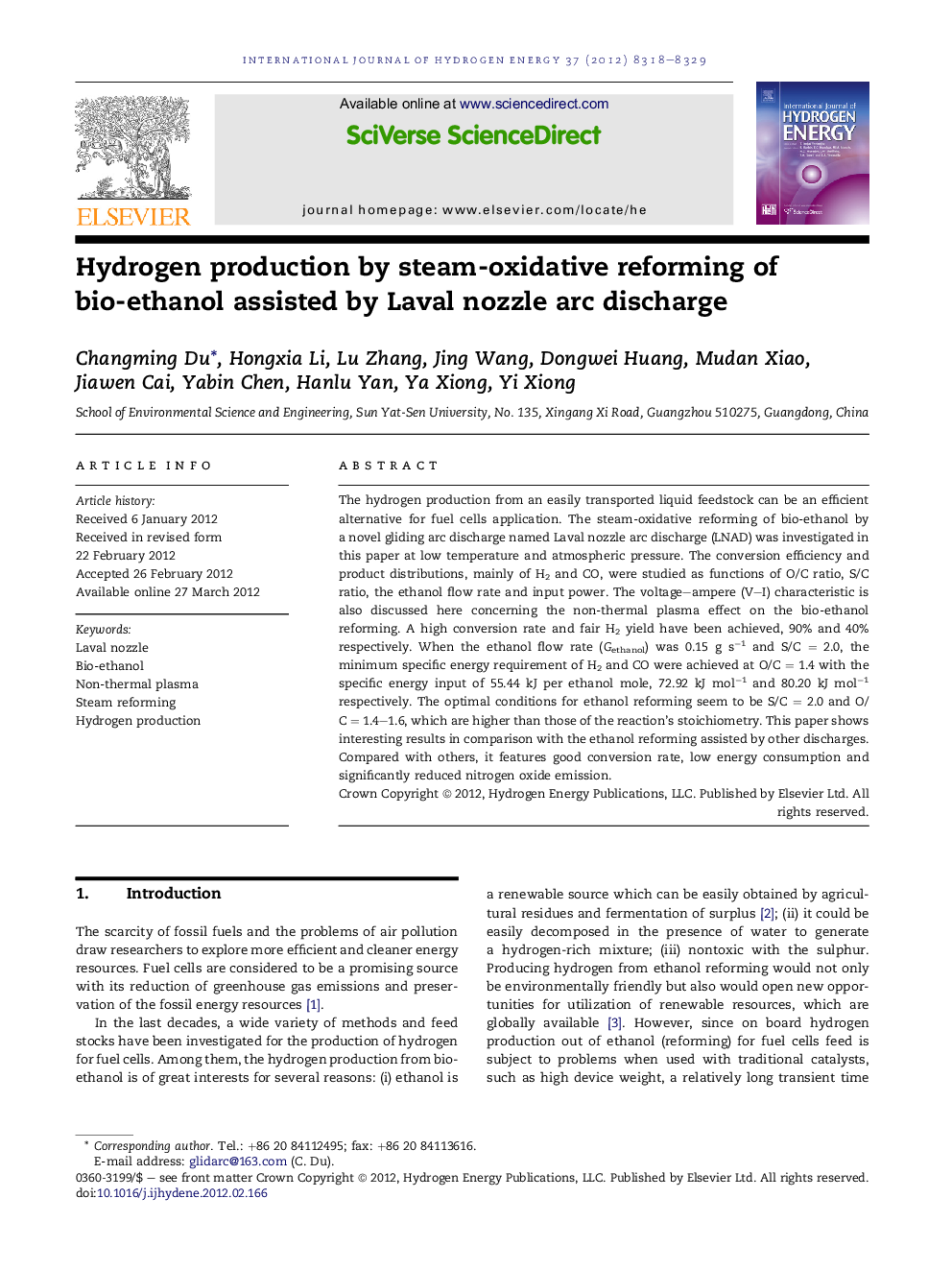| کد مقاله | کد نشریه | سال انتشار | مقاله انگلیسی | نسخه تمام متن |
|---|---|---|---|---|
| 1275331 | 1497559 | 2012 | 12 صفحه PDF | دانلود رایگان |

The hydrogen production from an easily transported liquid feedstock can be an efficient alternative for fuel cells application. The steam-oxidative reforming of bio-ethanol by a novel gliding arc discharge named Laval nozzle arc discharge (LNAD) was investigated in this paper at low temperature and atmospheric pressure. The conversion efficiency and product distributions, mainly of H2 and CO, were studied as functions of O/C ratio, S/C ratio, the ethanol flow rate and input power. The voltage–ampere (V–I) characteristic is also discussed here concerning the non-thermal plasma effect on the bio-ethanol reforming. A high conversion rate and fair H2 yield have been achieved, 90% and 40% respectively. When the ethanol flow rate (Gethanol) was 0.15 g s−1 and S/C = 2.0, the minimum specific energy requirement of H2 and CO were achieved at O/C = 1.4 with the specific energy input of 55.44 kJ per ethanol mole, 72.92 kJ mol−1 and 80.20 kJ mol−1 respectively. The optimal conditions for ethanol reforming seem to be S/C = 2.0 and O/C = 1.4–1.6, which are higher than those of the reaction's stoichiometry. This paper shows interesting results in comparison with the ethanol reforming assisted by other discharges. Compared with others, it features good conversion rate, low energy consumption and significantly reduced nitrogen oxide emission.
A novel subsonic 3-D tornado-type gliding arc discharge named Laval nozzle arc discharge (LNAD) was investigated to assist the steam-oxidative reforming of bio-ethanol.Figure optionsDownload as PowerPoint slideHighlights
► A subsonic 3-D tornado-type gliding arc discharge as plasma generation source.
► Its special geometry leads to high ionization degree and plasma density.
► It features low energy consumption and good conversion of bio-ethanol.
► Significantly reduced nitrogen oxide emission of lower than 10 ppm in the products.
Journal: International Journal of Hydrogen Energy - Volume 37, Issue 10, May 2012, Pages 8318–8329